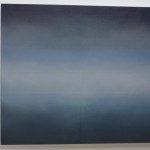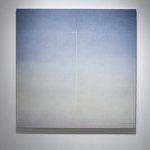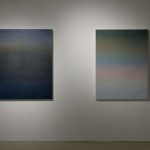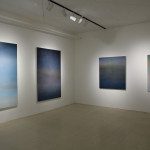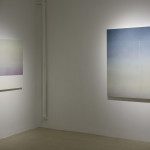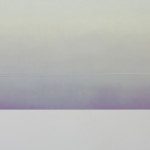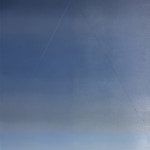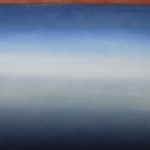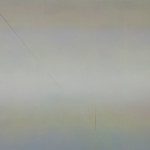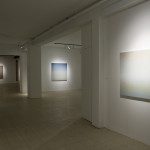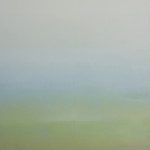Opening reception: Saturday, January 17 from 3-5pm
Michelle Lundqvist : Reticence
Living with the Invisible
Text by Edwin Janzen
It is a commonplace of human experience to perceive ourselves surrounded by phenomena we know of and depend upon, but cannot apprehend. Once it was (and remains, for some) a spiritual world populated by gods and daemons; today it is infrared and ultraviolet light, high- and low-frequency sounds, electro-magnetic fields, microscopic phenomena and objects at the extremes of space and time. Pursing a deeply intuitive practice, painter Michelle Lundqvist confronts invisibles like these, elaborating new ways of “seeing” where our senses come up short.
Lundqvist’s canvases are mostly quite large, and their expansive, intensively worked surfaces—the colours expertly, painstakingly blended—read as vast “nowhere spaces.” Lundqvist strives to make these intensely wrought fields non-referential, non-symbolic. Viewers may interpret their subdued tones, mostly blues, as skies and clouds, but such superficial readings are quickly upended by an occasional, inconvenient green.
These subdued tones often belie origins in bolder hues—vermillion, cadmium yellow, etc.—that the artist has worked and reworked. Start with a colour, glaze with its opposite, get a new colour. Glaze that with its opposite—and so on. The once-bright hue remains evident, in the end, in a subtle, underpainted glow.
Here are more “invisible reals.” Not unlike our perception of a distant galaxy, or the processes that formed our very planet, we can see only the detritus, the subdued leavings of primordial fires upon which we extrapolate using technology and metaphor. Perhaps creation (and indeed, evolution) is no grand, radical gesture, but the long moderation or mitigation of such a gesture.
Lundqvist’s blended colour fields are interrupted by arrays of straight, narrow lines. Again, symbolist or geometrical readings give way; the lines could be anything, archives of unnamed phenomena—temperament, vibration—things that appear but for a moment, then disappear forever.
But Lundqvist’s paintings are no lament for our seemingly truncated sensory range; visionings of the invisible, they hint at an uneasy yet beautiful possibility. Merleau-Ponty wrote, “It is as though our vision were formed in the heart of the visible…. What there is then [is] something to which we could not be closer than by palpating it with our look.” If vision and visible are closer than we normally admit, “palpating” each other thus, then maybe Lundqvist’s work can open a way for us to enter into a similar relation with the insensible. Perhaps our fleshly apparatus (eyes, ears, brain, etc.), in apprehending the world through the creative act, may yet reveal us drawn together with that world—visible and invisible parts both—in an intimate, eternal embrace.



